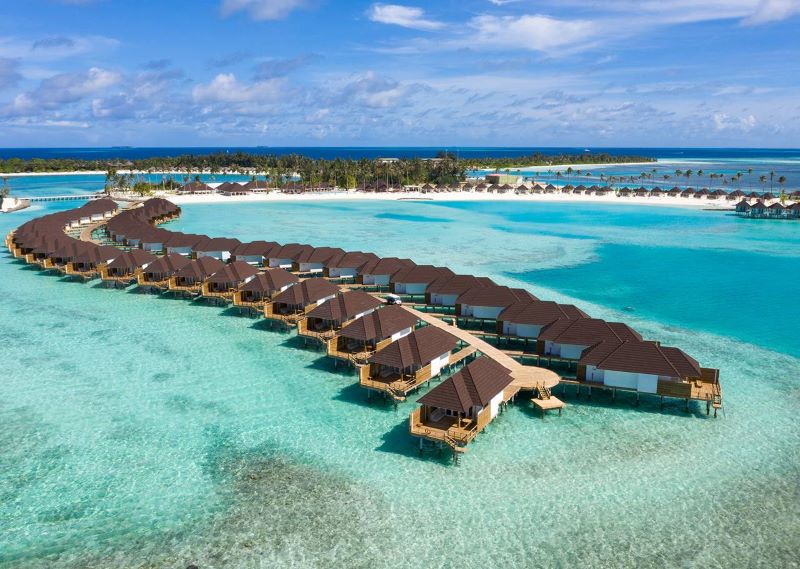Made up of around 1200 islands, the Maldives is hands-down one of the most interesting tropical destinations in the world. It first became popular with jet-setting celebrities a few years ago,particularly loved-up couples looking for a romantic getaway to a private tropical island.
However, with more and more airlines now operating flights to the Maldives, it has become more affordable and accessible. It’s also a great destination for families, with many Maldives resorts offering family-friendly accommodations and fun activities for everyone. Glamorous overwater resorts, pristine white-sand beaches, and a spectacular underwater world make the Maldives the ultimate travel destination for the discerning traveler. The sovereign archipelagic nation – positioned in the Indian Ocean southwest of India – consists of 26 breathtaking atolls boasting rich cultural traditions and natural treasures. All the coral islands and sandbanks (200 inhabited islands, plus 130+ islands with tourist resorts) are the visible coral tips of an oceanic volcanic mountain range whose outer edge at some points plunge to depths of over 3 km (10,000 ft). The tiny islands are encircled by magnificent beaches and incredibly beautiful lagoons, blessed with crystal clear waters and protected by reef structures. Every resort in the Maldives is built on its own private, picture-perfect palm island, with the world’s most exclusive hotel brands competing with each other to offer their guests unprecedented levels of mind-blowing luxury.
Get the most out of your (luxury or budget) trip to the Maldives with our travel guide and assistance.
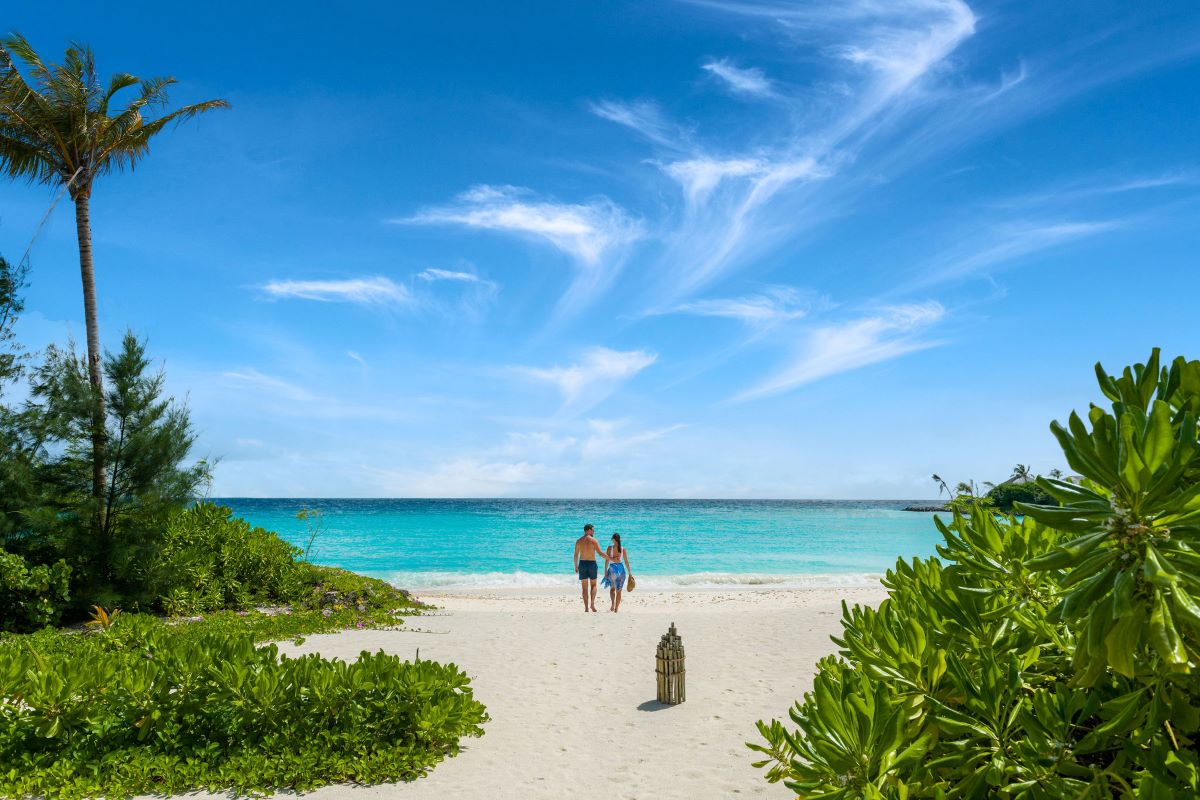
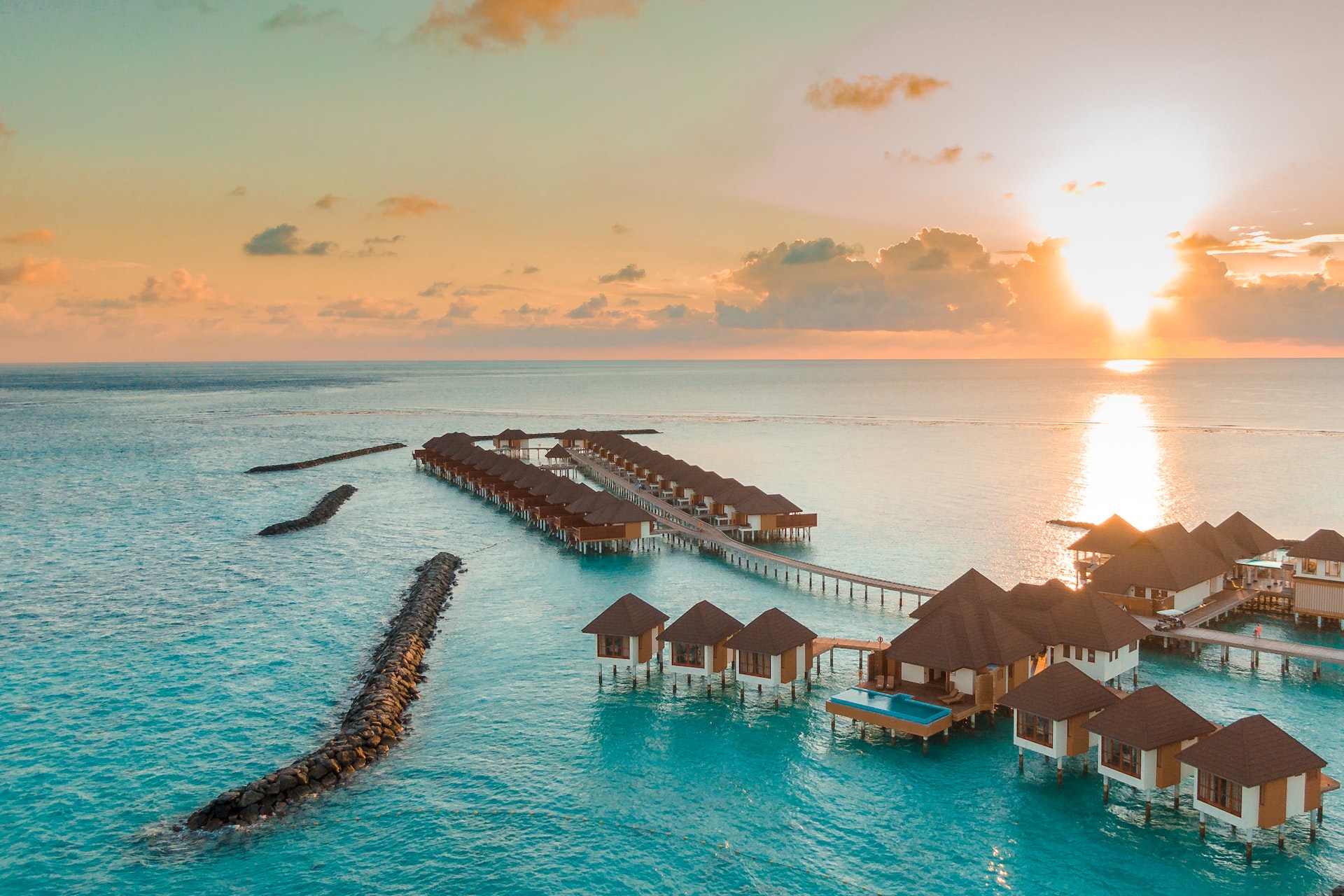
The Maldives enjoys a tropical climate, hot all year round, with a weather pattern that is mainly determined by two monsoon seasons in which the trade winds blow from opposite directions.
It has to be noted that the tropical climate in the Maldives and the exact timing of the transition periods have become very much unpredictable in recent years, with the wet season becoming drier and the dry season seeing more showers. Also, there a subtle differences in the weather patterns from atoll to atoll, since the Maldives is a very large country, stretching out over 800 km (500 mi) in the equatorial area. The northern atolls – which are home to the archipelago’s most luxurious resorts – enjoy more sunshine and have lesser annual rainfall than the central atolls (where the capital Male is located) and the atolls located south of the Equator. This geographic difference is mainly due to the fact that the dry season is more pronounced in the northernmost atolls.
Some travelers visit the Maldives, not so much for the beaches and resorts, but for the world-class diving and the opportunity of swimming with manta rays and whale sharks. Diving conditions are superb throughout the year, but the areas frequented by the larger marine animals vary with the seasons. During the dry northeast monsoon season, manta ray and whale shark diving in the Maldives is best on the western side of the atolls, whereas during the Southeast Monsoon season, manta rays and whale sharks will typically be encountered near the eastern edge of the atolls.
The majority of the Maldives’ secluded resorts on far-flung private islands are within a one hour boat or seaplane ride from the Maldives’ main airport, Male International Airport (MLE; also known as Velana International Airport), which is located in the North Male Atoll near the capital of Male. The airport is served by a wide array of international Asian and European airlines, both charters and mainstream carriers.
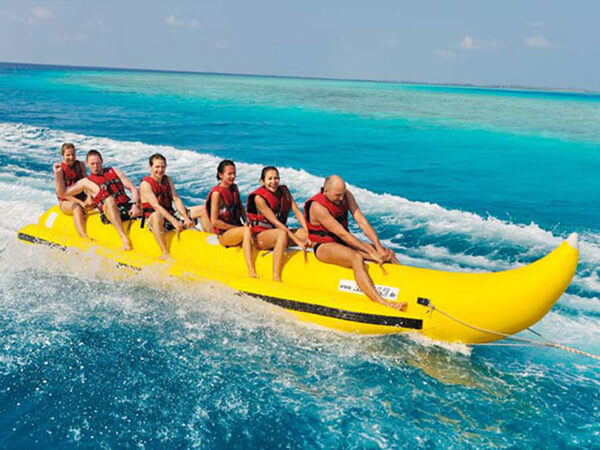
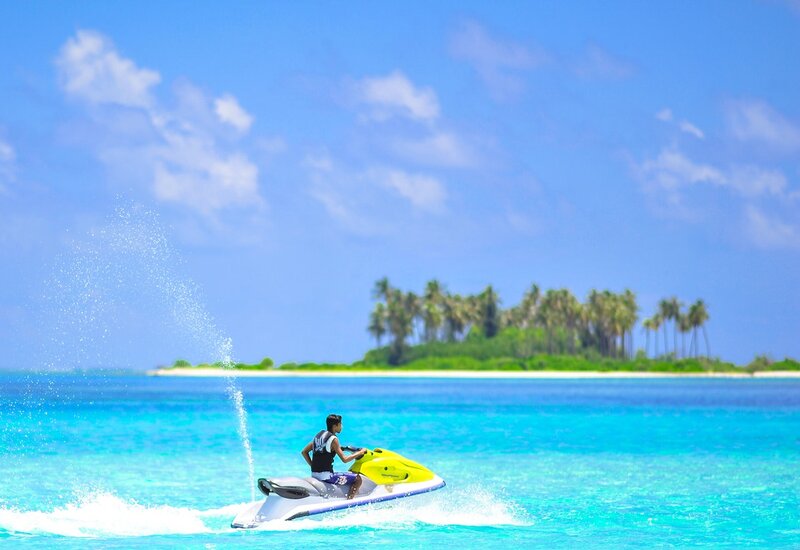
Transfers from Male airport to the hotels are taken care of by the resorts:
Requirements for entry into the Maldives differ from country to country, and are subject to change. Prior to departure, always check with your government and your nearest Maldivian embassy or consulate what documents you need for travel to the Maldives.
There are several good reasons why you should put the Maldives on your bucket list:
Most people who travel to the Maldives stay at one resort for one week. I don’t recommend to travel around too much within the Maldives, since getting from one resort to another is an expensive and often time-consuming affair (since you mostly have to backtrack via Male airport).
However, if the prospect of staying an entire week at one resort on a little island sounds too much for you, there are a few resorts that can be easily combined in one and the same itinerary, because they are either located in the same atoll or connected via a direct and private (and often pricey) speedboat transfer. A few examples:
In addition, a select group of ultra-luxe hotel companies operates more than one resort in the archipelago, offering an enhanced and more convenient transfer experience between their properties. A few examples:
